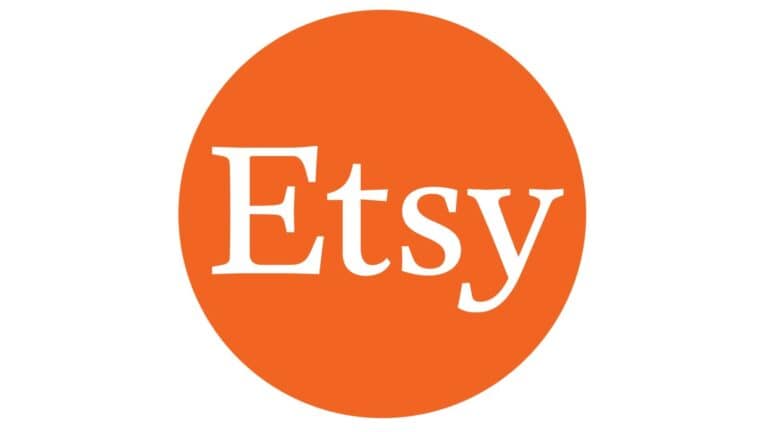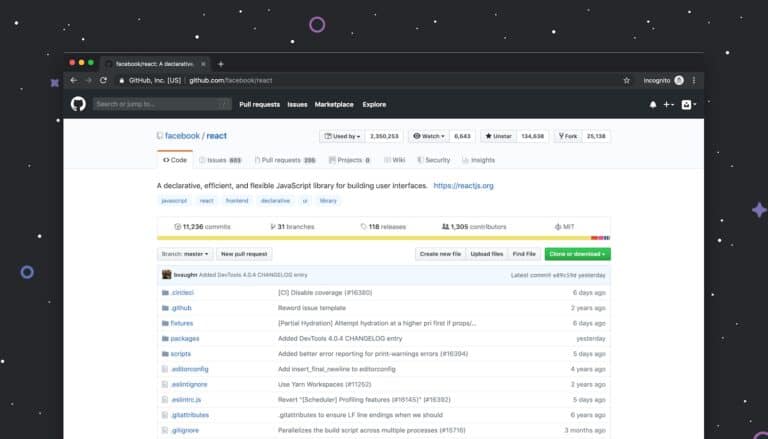
The dark web is a mysterious corner of the internet that many have heard about but few truly understand. Unlike the regular internet we use daily, the dark web exists on specialized networks that require specific software to access. The dark web is a section of the internet that isn’t visible to search engines and requires an anonymizing browser called Tor to access, offering users privacy and anonymity that isn’t available on the standard surface web.
While often associated with illegal activities, the dark web also serves legitimate purposes for people seeking privacy in regions with internet censorship. It’s actually a small part of the deep web, which includes all internet content not indexed by standard search engines. Many people confuse these terms, but understanding the difference helps clarify why the dark web has gained its reputation.
The technology behind the dark web was originally developed to protect sensitive communications. Today, accessing it requires the Tor browser, which routes internet traffic through multiple servers to mask users’ identities and locations. This level of anonymity has made it both a haven for privacy advocates and a challenge for law enforcement agencies monitoring illegal activities.
🕸️ What Is the Dark Web?
The Dark Web is a hidden part of the internet that isn’t indexed by traditional search engines like Google or Bing. It exists within the Deep Web, which includes all web pages not accessible through standard search (e.g., private databases, academic portals, or password-protected sites).
To access the Dark Web, users typically need special software that enables anonymity — most commonly the Tor Browser (The Onion Router).
According to Private Internet Access (2025), the Dark Web is both a space for privacy-focused communication and a hub for illegal activities, depending on how it’s used.
🌐 Deep Web vs. Dark Web
| Layer | Accessibility | Typical Use | Example |
|---|---|---|---|
| Surface Web | Indexed by search engines | Everyday browsing | Google, Wikipedia |
| Deep Web | Requires credentials or direct links | Databases, private accounts | Online banking, research archives |
| Dark Web | Requires special software (Tor, I2P) | Anonymous communication, hidden marketplaces | .onion sites |
(Source: Huntress Cybersecurity Guide)
🔒 How the Dark Web Works
The Dark Web uses encryption and routing technologies to hide user identities and server locations.
- Tor Network: Routes traffic through multiple volunteer-operated servers (nodes), making it nearly impossible to trace.
- .onion Domains: Unique web addresses only accessible via Tor.
- Cryptocurrencies: Bitcoin and Monero are often used for transactions to maintain anonymity.
⚖️ Legal and Illegal Uses
The Dark Web is not inherently illegal, but it’s often associated with illicit activities.
✅ Legitimate Uses
- Whistleblowing and journalism (e.g., SecureDrop)
- Circumventing censorship in authoritarian countries
- Privacy protection for activists or researchers
🚫 Illegal Uses
- Sale of stolen data or identities
- Drug and weapon trafficking
- Hacking tools and malware distribution
- Fraudulent marketplaces
(Source: ISO.org – Myths, Realities, and Cybersecurity Risks)
⚠️ Risks of Accessing the Dark Web
Exploring the Dark Web can expose you to serious cybersecurity and legal risks, including:
- Malware infections and phishing scams
- Identity theft and data leaks
- Law enforcement monitoring of illegal activity
- Financial loss from scams or ransomware
As Science News Today (2025) notes, the potential for harm is significant — proceed only with caution and awareness.
🧭 How to Stay Safe
If you choose to explore the Dark Web:
- Use a reputable VPN before connecting to Tor.
- Keep your system updated to patch vulnerabilities.
- Never share personal information.
- Avoid downloading files or clicking suspicious links.
- Stick to verified directories of legitimate .onion sites (e.g., privacy-focused services).
(Source: Axis Intelligence – Dark Web Security Guide)
🧩 Key Takeaway
The Dark Web is a double-edged sword — it offers privacy and freedom of expression but also harbors significant dangers. It’s best approached with strong cybersecurity practices, ethical intent, and a clear understanding of the risks.
Key Takeaways
- The dark web requires special software like Tor to access and isn’t visible to regular search engines, unlike the surface web we commonly use.
- Dark web users enjoy enhanced privacy and anonymity, making it valuable for legitimate purposes in regions with internet censorship.
- While the dark web has legitimate uses, its anonymity features have also enabled various illegal marketplaces and activities that pose cybersecurity risks.
Defining the Dark Web
The dark web is a hidden part of the internet that requires special software to access. It provides users with anonymity but also harbors both legitimate and illegal activities.
Comparison with Surface Web and Deep Web
The internet is divided into three main layers. The surface web is what most people use daily – websites that can be found through search engines like Google. This represents only about 4% of the internet.
The deep web makes up most of the internet and includes password-protected content like email accounts, online banking, and private social media profiles. These pages aren’t indexed by search engines but are still accessible through standard browsers.
The dark web exists within the deep web but requires specialized software to access. Unlike other internet areas, it’s deliberately hidden and designed for anonymity. Websites on the dark web typically have scrambled URLs ending in “.onion” instead of common domains like “.com” or “.org”.
The Role of Anonymity
Anonymity is the core feature of the dark web. Users access it through specialized browsers like Tor (The Onion Router), which routes internet traffic through multiple servers and encrypts it at each step.
This multi-layered encryption (like layers of an onion) makes it nearly impossible to track users’ identities or locations. The encryption protects both website operators and visitors.
Anonymity serves legitimate purposes for:
- Journalists in countries with censorship
- Political dissidents
- Whistleblowers
- Privacy-conscious individuals
However, this same anonymity also enables illegal marketplaces, forums for illicit content, and various cybercrimes. The dark web’s protection from standard search engines creates an environment where both beneficial and harmful activities can flourish.
Accessing the Dark Web
Visiting the dark web requires specific tools and precautions to maintain security and anonymity. The process involves more than just opening a regular browser and typing in a web address.
Using Tor and the Tor Browser
Tor (The Onion Router) is the primary gateway to access the dark web. It works by routing internet traffic through multiple servers and encrypting it at each step. This creates layers of encryption, similar to an onion’s layers.
The Tor Browser is a modified version of Firefox specifically designed for accessing the dark web. Users can download it from the official Tor Project website.
Dark web addresses look different from regular websites. Instead of ending with .com or .org, they typically end with .onion and contain random strings of letters and numbers.
The browser automatically connects to the Tor network when launched, requiring no additional configuration from most users. However, users should avoid downloading files through Tor, as this can compromise security.
The Importance of VPNs
A Virtual Private Network (VPN) adds an extra layer of security when accessing the dark web. It encrypts internet traffic before it enters the Tor network, hiding activities even from internet service providers.
Using a VPN with Tor creates what experts call the “VPN over Tor” configuration. This prevents Tor entry nodes from seeing a user’s real IP address if they’re compromised.
Not all VPNs are suitable for dark web access. Users should select one with:
- A strict no-logs policy
- Strong encryption standards
- Kill switch functionality
- Payment methods that don’t require personal information
The combination of Tor and a reputable VPN significantly reduces the risk of identity exposure while navigating the dark web.
Specialized Search Engines
Regular search engines like Google don’t index dark web content. Instead, specialized search engines help users find .onion sites.
Popular dark web search engines include:
- The Hidden Wiki (a directory of links)
- Torch (one of the oldest dark web search engines)
- Ahmia (indexes Tor hidden services)
- Not Evil (modeled after Google’s simple interface)
These search tools help navigate the otherwise difficult-to-map dark web landscape. However, users should exercise caution as search results may lead to illegal or dangerous content.
Search engines on the dark web often lack the sophisticated filtering of mainstream search engines. They may return links to sites containing harmful material or scams alongside legitimate resources.
Dark Web Marketplaces
Darknet markets function as hidden commercial websites that operate through special networks like Tor and I2P. These digital black markets have become significant outlets for illegal trade worldwide.
Types of Goods and Services
The product offerings on dark web marketplaces are diverse and primarily illegal. Drugs rank among the most commonly sold items, ranging from prescription medications to illegal substances like cocaine and heroin. These platforms also traffic heavily in stolen data, including:
- Credit card information
- Login credentials
- Personal identification documents
- Medical records
Counterfeit goods appear frequently, with fake IDs, passports, and currency being particularly popular. Hacking tools and malware provide cybercriminals with ready-made solutions for launching attacks.
Some marketplaces even list weapons and prohibited services, though many platforms draw the line at particularly harmful offerings like hitman services or child exploitation material.
The Use of Cryptocurrency
Bitcoin and other cryptocurrencies serve as the financial backbone of dark web marketplaces. These digital currencies offer relative anonymity in transactions, making them ideal for illegal commerce.
When users make purchases, the marketplace typically employs an escrow system. This holds the buyer’s funds until they confirm receipt of goods, adding a layer of trust to otherwise risky transactions.
Law enforcement has developed sophisticated methods for identifying key players through Bitcoin transaction analysis. This has led marketplace operators to adopt privacy-focused cryptocurrencies like Monero that offer enhanced anonymity features.
Most marketplaces require multiple forms of authentication and encrypt all communications. These security measures protect users from both law enforcement detection and scams from other marketplace participants.
Cybersecurity Risks
The dark web presents significant dangers to individuals and organizations alike, serving as a hub for various malicious activities. These risks range from sophisticated malware distribution to organized data theft operations that can have devastating consequences.
Prevalence of Malware
The dark web functions as a thriving marketplace for malicious software. Cybercriminals can easily purchase or download malware-as-a-service (MaaS) and exploit kits, allowing even those with limited technical skills to launch sophisticated attacks.
Types of malware commonly found on the dark web include:
- Ransomware – encrypts files until a payment is made
- Keyloggers – records keystrokes to steal passwords
- Remote Access Trojans (RATs) – provides unauthorized access to systems
These tools are often sold with customer support and update packages, mimicking legitimate software businesses. The malware economy on the dark web continues to evolve, with developers constantly creating new variants to evade detection by security systems.
Many dark web forums also share tutorials on deploying these threats, making it easier for novice hackers to successfully breach systems.
Data Breaches and Identity Theft
The dark web serves as the primary destination for stolen data after successful breaches. Hackers routinely sell massive databases containing personal information stolen from companies and organizations.
Common items sold on dark web marketplaces include:
| Type of Data | Typical Price Range | Common Uses |
|---|---|---|
| Credit Cards | $5-$110 | Fraudulent purchases |
| Full Identity Packages | $40-$200 | Complete identity theft |
| Login Credentials | $1-$10 | Account takeovers |
These marketplaces operate similarly to e-commerce sites, with seller ratings, reviews, and even money-back guarantees. The stolen information enables criminals to commit identity theft, open fraudulent accounts, make unauthorized purchases, or access sensitive systems.
Large-scale data breaches frequently end with the compromised information appearing for sale on dark web forums, sometimes within hours of the initial breach.
Protecting Personal and Sensitive Information
Individuals and organizations must take proactive steps to protect against dark web threats. Using strong, unique passwords for each online account is essential, as credential reuse remains a common attack vector when credentials are exposed on the dark web.
Effective protection strategies include:
- Enabling multi-factor authentication wherever possible
- Regularly monitoring credit reports and financial statements
- Using dedicated security software that includes dark web monitoring
- Being cautious about sharing personal information online
Organizations should implement data loss prevention systems and conduct regular security audits. Many companies now employ specialized services that monitor the dark web for leaked company data or employee credentials.
Encrypting sensitive information provides an additional layer of protection, making data unusable even if it’s stolen. Regular security awareness training helps employees recognize phishing attempts and other social engineering tactics used to gain initial access.
Legal Aspects and Law Enforcement
The dark web presents unique challenges for legal authorities worldwide as they navigate complex jurisdictional issues while trying to combat illegal activities. Law enforcement agencies have developed specialized techniques and international cooperation frameworks to address cybercrime in this hidden environment.
Monitoring and Surveillance
Law enforcement agencies use sophisticated tools to monitor illegal activities on the dark web. These include specialized software for tracking digital footprints and undercover operations where agents pose as users or service providers. The FBI, Europol, and other agencies have established dedicated units focusing on dark web investigations.
When conducting surveillance, authorities often face difficult moral and legal issues related to privacy rights versus security needs. The balance between protecting citizens and respecting civil liberties remains contentious.
International cooperation has become essential, with agencies sharing intelligence across borders. Joint operations have successfully dismantled major criminal networks operating on the dark web, including drug trafficking rings and child exploitation sites.
Challenges in Combatting Cybercrime
The anonymous nature of the dark web creates significant hurdles for investigators. Encryption technologies and location-masking tools make tracking perpetrators exceptionally difficult, often requiring advanced technical expertise to overcome.
Jurisdictional complications further impede enforcement efforts. As noted by legal scholars, government hacking tools used on the dark web can disrupt established cross-border legal frameworks. When criminals, servers, and victims exist in different countries, determining which laws apply becomes problematic.
Resource limitations also hamper investigations. Cybercriminals continuously adapt their methods, requiring authorities to constantly update their technical capabilities and training.
Despite these obstacles, successful prosecutions do occur. Law enforcement professionals have identified specific investigative needs and developed collaborative approaches to address the dark web’s criminal elements while acknowledging its legitimate privacy benefits.
Community and Culture
The dark web has developed unique social structures that operate under different norms than the regular internet. These hidden communities thrive on anonymity while grappling with complex ethical questions about freedom and responsibility.
Dark Web Forums and Communication
Dark web forums serve as gathering places for users seeking privacy and unrestricted discussion. These platforms typically operate on the Tor network, which enables users to communicate while concealing their identities. Forum members often use pseudonyms and encrypted messaging to protect themselves.
Some forums focus on legitimate privacy concerns and political discussion. Others exist for technical exchanges between security researchers and privacy advocates.
Communication methods on these platforms prioritize security. PGP encryption is commonly used to verify identities and secure messages between users. This creates an atmosphere of cautious trust.
Specialized forums cater to specific interests, from technology discussions to marketplace feedback. The community norms often emphasize strict rules about maintaining anonymity and security practices.
Ethical Considerations
The dark web’s anonymity creates significant ethical dilemmas. While it provides essential protection for journalists and political dissidents in oppressive regimes, it also shields criminal activities from law enforcement.
Privacy advocates argue that anonymous spaces are necessary for free expression in an era of increasing surveillance. They point to legitimate uses like secure whistleblowing platforms and communication channels for vulnerable groups.
Critics counter that this same anonymity enables illegal marketplaces and harmful content. The debate centers on finding balance between personal privacy and public safety.
The technical design of the dark web intentionally resists centralized control. This creates challenges for establishing community standards and ethical frameworks that most users will respect.
Different dark web communities establish their own ethical codes. Some strictly prohibit certain content types, while others operate with minimal restrictions.
Technical Infrastructure
The dark web relies on sophisticated technical components that enable anonymity and privacy. These systems work together to create hidden networks that standard browsers cannot access.
Encryption and Security Protocols
The dark web functions through multiple layers of encryption, making it significantly different from the regular internet. At its core is Tor (The Onion Router), which routes internet traffic through numerous encrypted layers.
This “onion routing” process bounces connections through a worldwide network of volunteer relays. Each relay only knows the previous and next steps in the chain, never the complete path.
Communications on the dark web use end-to-end encryption to prevent monitoring. This makes tracking users extremely difficult, as data packets pass through at least three random servers.
Hidden services on the dark web use the “.onion” domain, which isn’t accessible through standard DNS systems. These sites require special configurations and don’t appear in regular search engines like Google.
The Tails Operating System
Tails (The Amnesic Incognito Live System) is a specialized operating system designed specifically for maintaining privacy when accessing the dark web.
This Linux-based system:
- Runs from a USB drive without installing on the computer
- Leaves no digital traces on the host machine
- Routes all internet connections through Tor automatically
- Comes with built-in encryption tools
Tails forces all internet connections through the Tor network and blocks non-anonymous connections. It includes encrypted tools for messaging, email, and file storage.
When a user finishes a session and shuts down Tails, it removes all traces of activity. No browsing history, downloaded files, or temporary data remains on the computer, providing an additional layer of privacy protection.
Frequently Asked Questions
People have many important questions about the dark web, from its legal status to its origins and safety concerns. Understanding these aspects can help individuals make informed decisions about dark web access and use.
What are the legal implications of accessing the dark web?
Accessing the dark web itself is not illegal in most countries. The Tor browser and similar tools used to access this hidden network are legitimate software.
However, many activities found on the dark web are illegal. Buying illegal drugs, weapons, or stolen data violates laws in most jurisdictions.
Law enforcement agencies actively monitor the dark web for criminal activity. Users should understand that while anonymity tools provide some protection, they are not foolproof against sophisticated tracking methods.
Who is responsible for the creation of the dark web?
The U.S. Naval Research Laboratory originally developed the Tor network in the mid-1990s. They created it to protect U.S. intelligence communications online.
The technology was later released as an open-source project. This allowed it to evolve into what we now know as the dark web.
The dark web’s existence today results from ongoing development by privacy advocates, security researchers, and various organizations concerned with online freedom and anonymity.
How can individuals safely navigate the dark web?
Using specialized software like the Tor browser is essential for accessing the dark web safely. This browser routes connections through multiple servers to hide users’ identities.
A virtual private network (VPN) can add an extra layer of security. It encrypts internet traffic before it enters the Tor network.
Users should disable JavaScript, avoid downloading files, and never share personal information. These precautions help minimize exposure to malware and tracking.
What distinguishes the dark web from the deep web?
The deep web includes all internet content not indexed by standard search engines. This encompasses everything from password-protected email accounts to subscription services.
The dark web exists within the deep web but requires special software to access. It’s specifically designed for anonymity and is not accessible with standard browsers.
While the deep web makes up about 90% of the internet and is mostly legitimate, the dark web is a much smaller portion known for both legitimate privacy uses and illicit activities.
In what ways do criminal entities utilize the dark web?
Criminal organizations operate marketplaces on the dark web that sell illegal goods and services. These include drugs, stolen data, counterfeit documents, and hacking services.
Ransomware operators use the dark web to communicate anonymously with victims and receive cryptocurrency payments. This makes tracking these cybercriminals very difficult.
Money laundering services on the dark web help convert illegally obtained funds into untraceable cryptocurrency. This enables criminals to hide their financial activities from authorities.
What steps should one take if their personal information is discovered on the dark web?
Immediately change passwords for all affected accounts. Use strong, unique passwords and enable two-factor authentication wherever possible.
Contact relevant financial institutions to freeze accounts or issue new cards if financial information was compromised. Many banks have specific protocols for handling potential identity theft.
Consider placing a fraud alert or credit freeze with credit bureaus. This makes it harder for identity thieves to open new accounts in the victim’s name.





